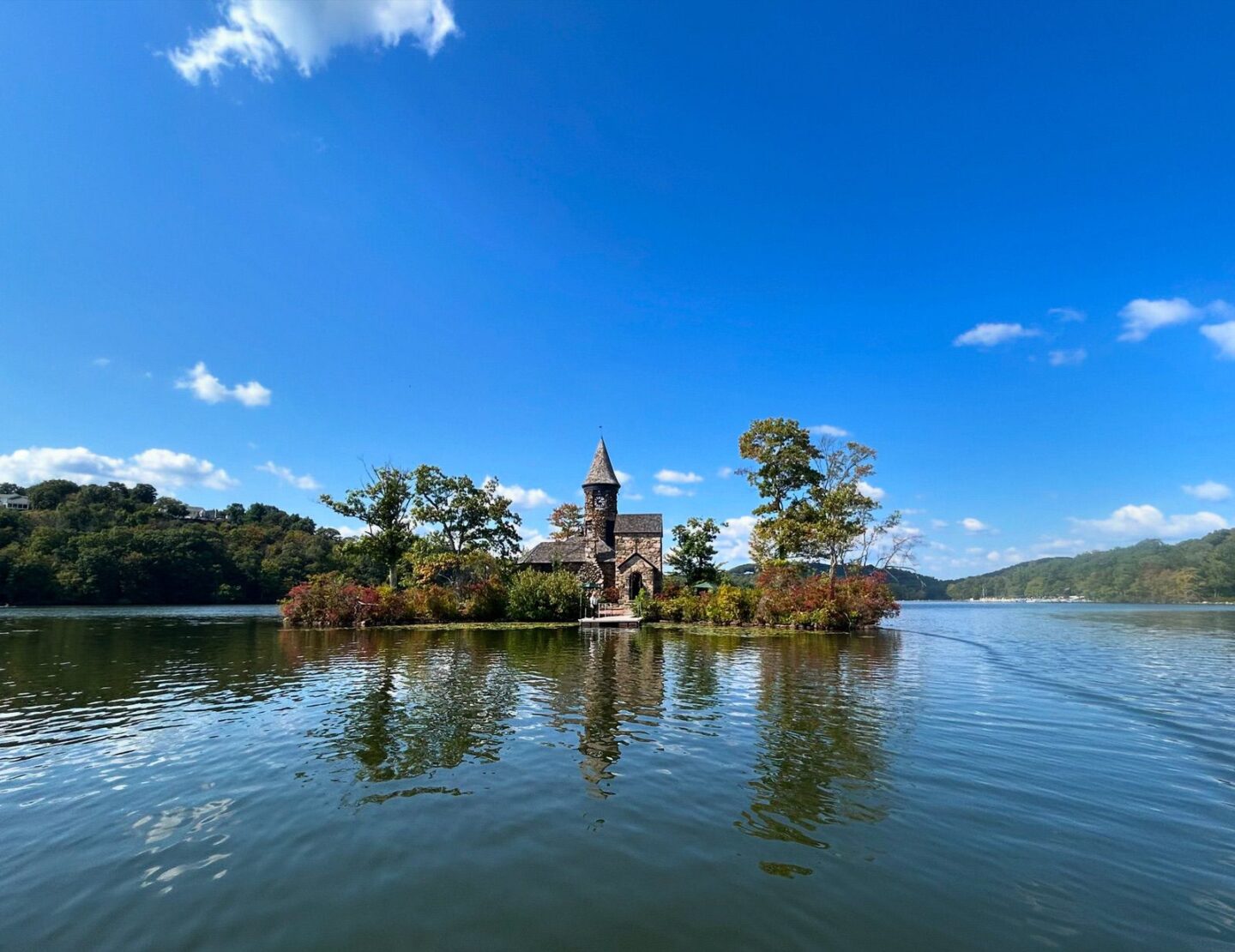
As the ferry pulled into the dock, the small island on Lake Kinnelon, where St. Hubert’s Chapel was built, came into focus. The clock tower rose taller into the sky and lily pads floated in the rippling water. Waiting on land was Tom Kline, who is the reason that this island-bound church is even standing today.
If you’re wondering how this tiny, medieval-inspired chapel ended up in New Jersey, let me introduce you to Francis Kinney. He became filthy rich as the owner of one the largest cigarette companies in the world. Those familiar with the television show Gilded Age are well aware of the high society battle between “new money” and “old money.” The Nouveau Riche often coped with social rejection by building extravagant homes and monuments out of spite. Kinney was no exception.
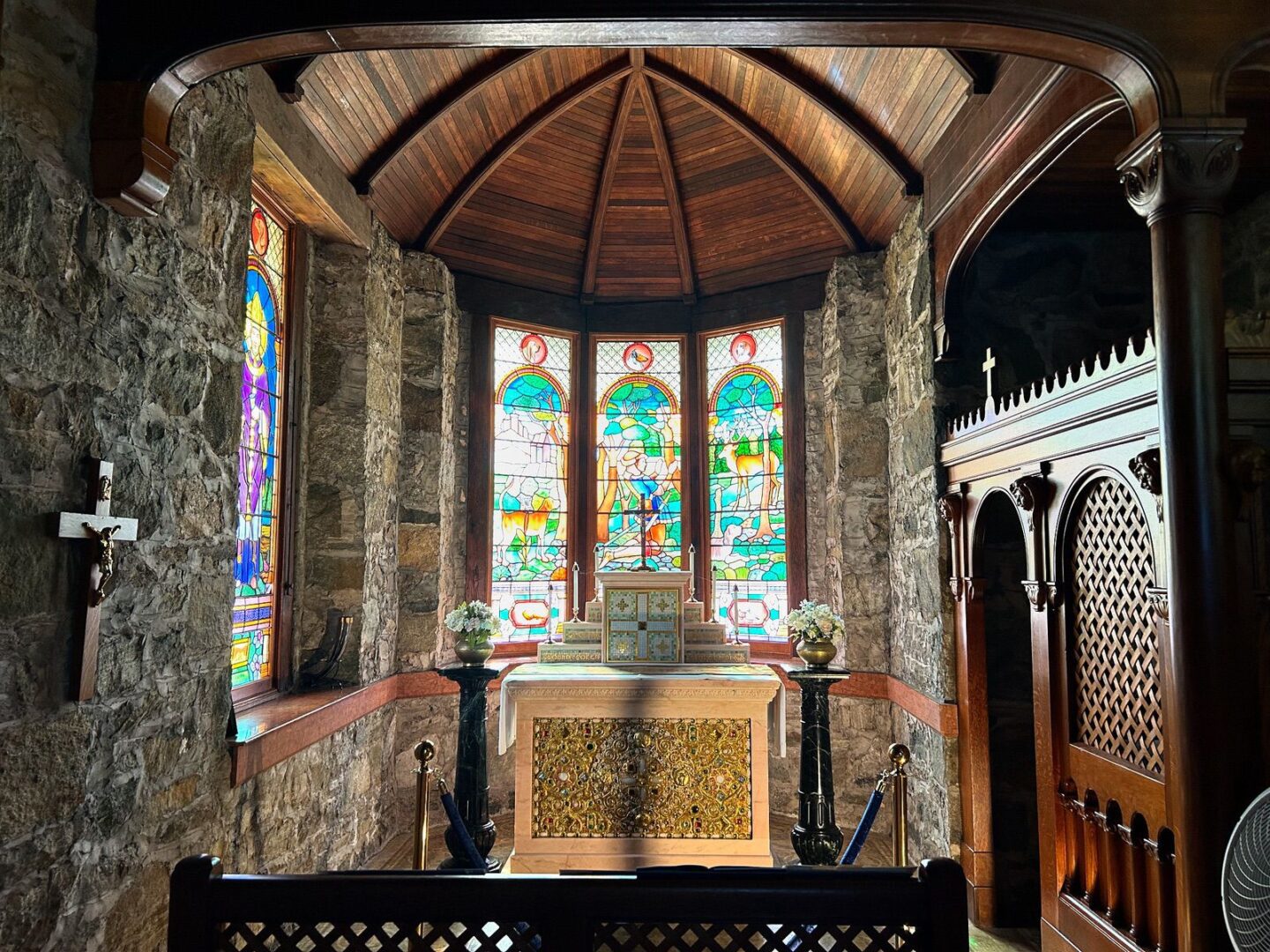
Spurned by the blue blood communities in upstate New York, he sought revenge in the late 19th century by buying his own miniature kingdom on 5,000 acres in Pequannock Township. Locals even called him the Baron of Kinnelon, perhaps ironically. While the original manor house no longer exists, other family relics still stand nearby, including his son’s manor house, a rampart-style lookout tower on the lake’s northern edge, and the chapel.
When Kinney died in 1908, he left the chapel and surrounding land to his son, who, without heirs, in turn left it to a friend named John Talbot, who subdivided the lakefront property, creating a gated community called Smoke Rise. The chapel served as a community church until 1952. Left unattended, the first of several vandals broke into the church in 1957, destroying and ransacking the relics. All of the stained-glass windows, except for one, were destroyed. In the 1960s, Kline, realizing the chapel’s beauty, vowed to restore the chapel, initially with his own money. In 1991, he formed a nonprofit called the Kinnelon Heritage Conservation Society.
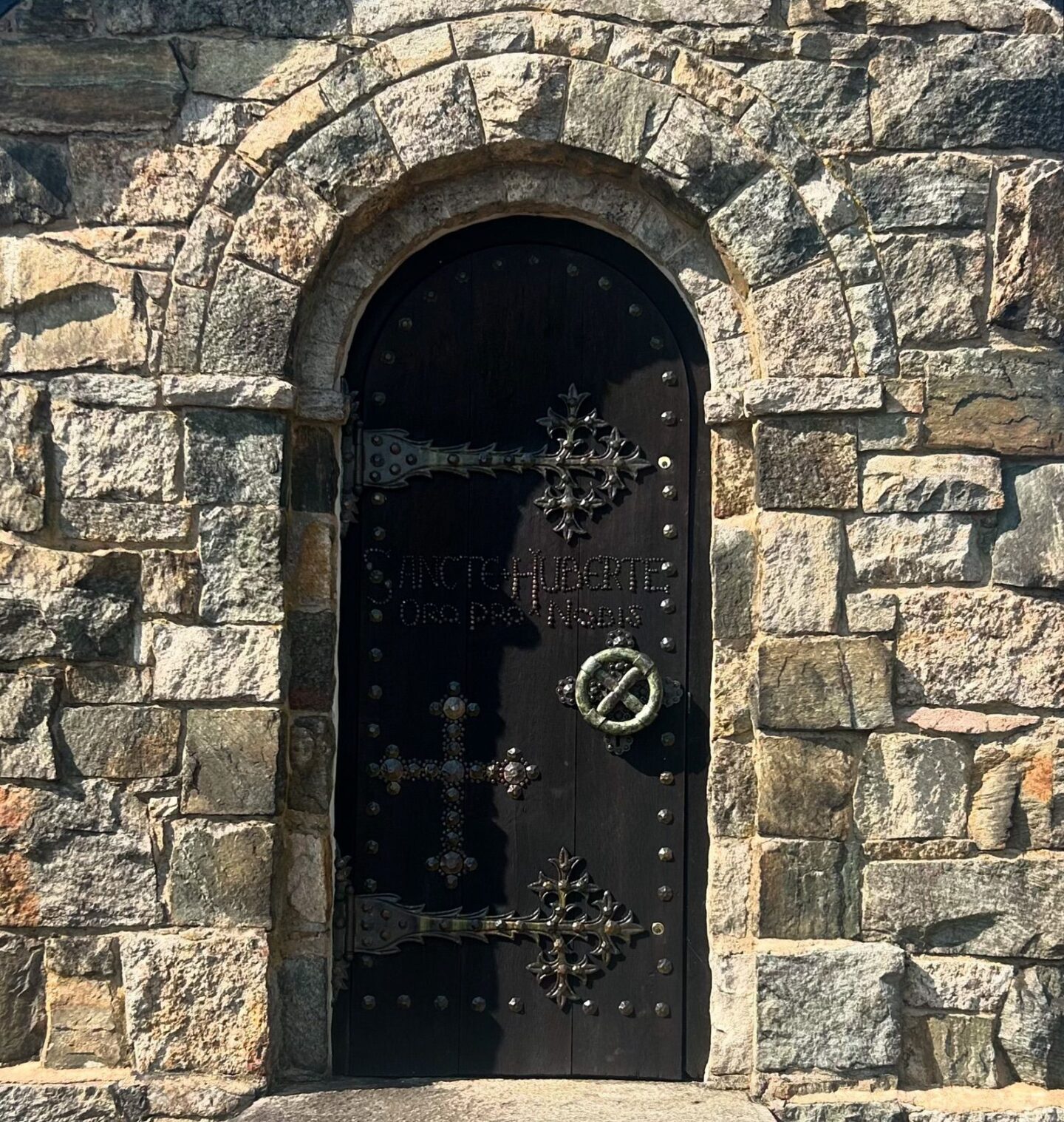
It wasn’t easy to book this tour. I first reached out in February, and again in April. After hearing nothing, I moved on with my life, convinced my email got lost in the inbox of the small but busy nonprofit that fundraises and restores the chapel. Then out of the blue, I got an email in August asking me to choose the date of my tour.
With immense gratitude, I entered the dim chapel. The first thing I noticed in the hallway is Louis C. Tiffany’s stained-glass window of a Celtic crucifix. In fact, Tiffany designed the entire interior of the chapel, including the wooden sacristy and the altar. But the other windows were designed by another glassmaker.

Darren Tobia/Jersey Digs.
The other major artwork is Italian sculptor Antonio Tantardini’s six-foot-tall marble statue of an angel. This used to serve as the grave maker to Kinney’s mother, Mary Cogswell Kinney, who was buried in Oak Hill Cemetery in DC. It was brought here to ensure its protection. As an indication of the Kinney family’s wealth and influence, his mother was a friend of Mary Todd Lincoln and witnessed the president’s assassination. Fortunately the statue has, for the most part, survived the vandalism. All that was lost was a carved trumpet that was held up by the statue’s right arm. Restoring that missing piece is one the Kinnelon Heritage’s last remaining projects inside the chapel.
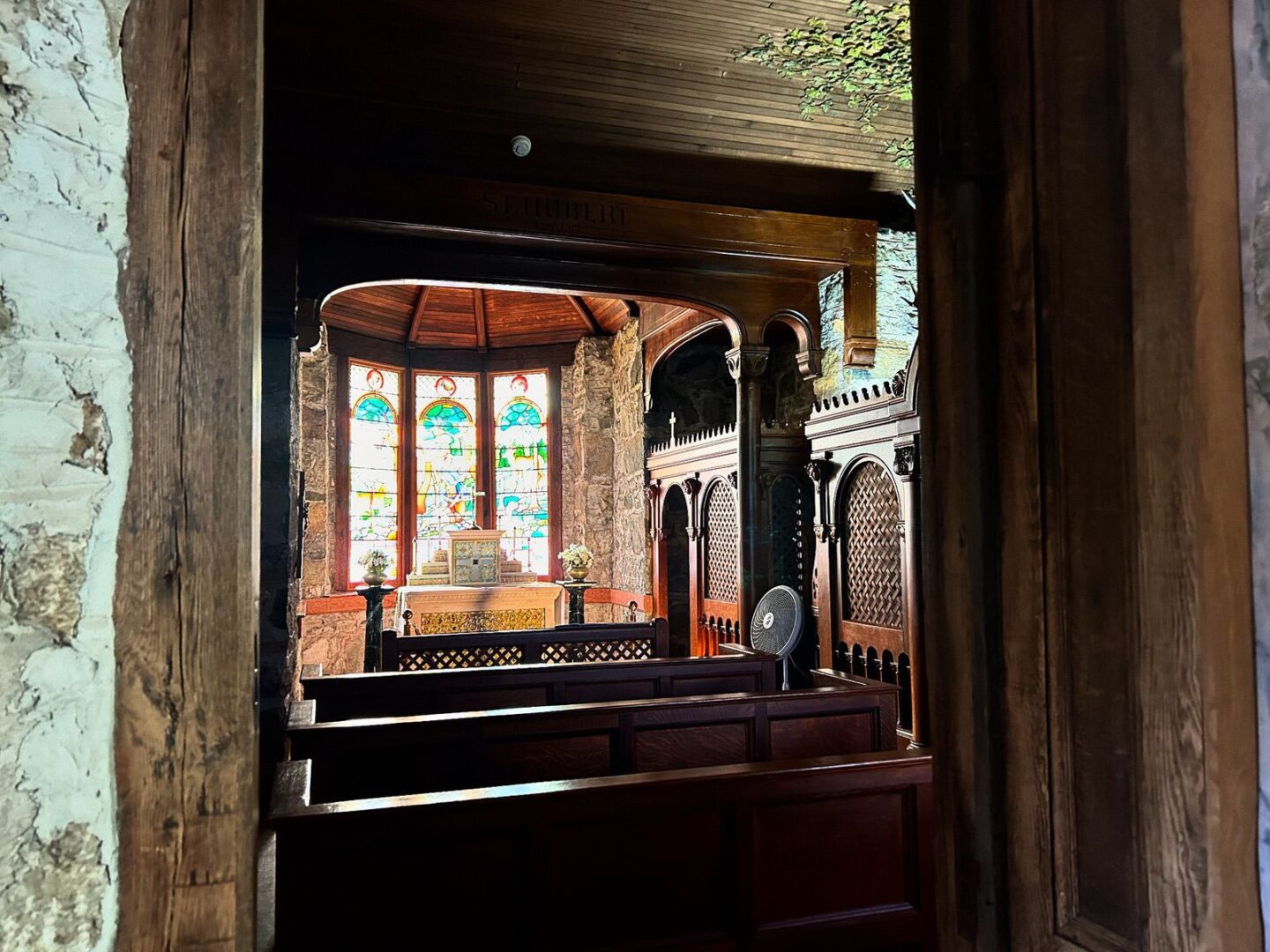
As the tour group entered into the chapel, and the eight of us sat in the pews facing the altar. I briefly imagined Kinney’s wife praying here with her children and tried to imagine her fears and concerns and what drove her to piety. It is easy to feel close to divinity bathed in multihued light and surrounded by precious artifacts.
I have been on tours of other historic places and watched well-meaning volunteers spew facts from a script or even read directly from cue cards. Hearing Kline tell us stories about the artworks in painstaking detail and answer our questions extemporaneously made me realize that the chapel is really his passion. Whatever forces brought him here were certainly fated. It is very likely the chapel wouldn’t be here today if he hadn’t begun restoring it in the 1960s. Structures without windows, open to the elements, don’t last very long.

After sinking six figures into restoring the church, Kline said that he had to assure his donors that vandalism wouldn’t happen again. Today the island is outfitted in security cameras to ensure this unusual place of history and beauty can be enjoyed by generations to come.
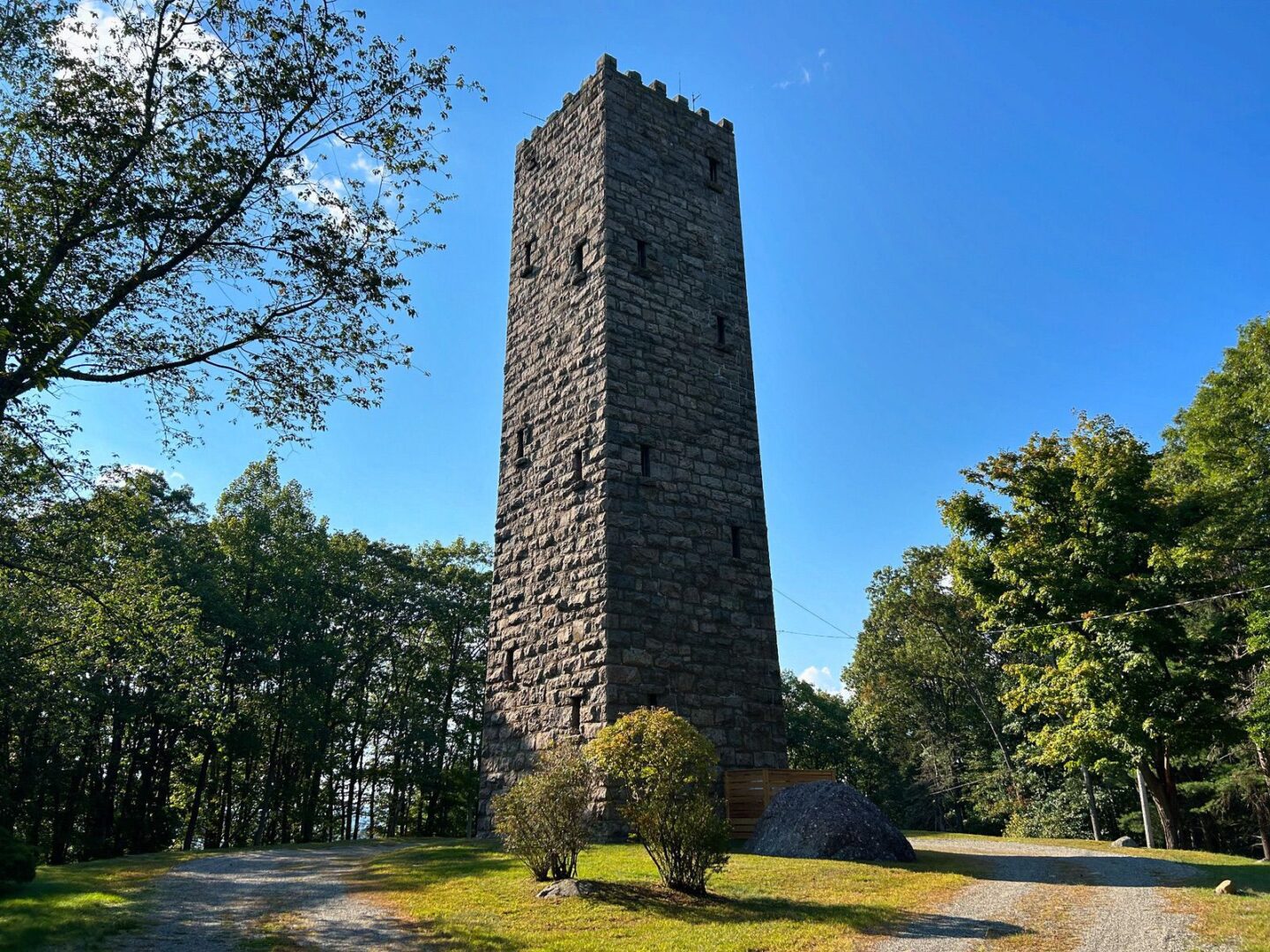
As we unwillingly left the island – a new tour group had arrived and the chapel can only hold 35 guests – I thought about two things. How amazing this place must look in the fall surrounded by autumn foliage and why this place isn’t more widely known. The boat driver must have overheard me saying this to a friend because he began talking about the difficulty of opening up the chapel to more tourism. It’s a delicate balance between sharing this work of art with the public and allowing Smoke Rise, a gated community of million dollar homes, remain private. Social media can quickly turn great places into tourist traps and perhaps St. Hubert’s Chapel will remain special precisely because it rewards those determined and patient enough to see it.
Planning a Trip to St. Hubert’s Chapel
I can’t stress enough that you have to sign up in advance for the tour. The dock is located behind a gate house that checks the name of those on the tour. Email Kinnelon Heritage Conservation Society here and be ever-so patient. The organization also offers private tours for $250.
You can also rent the chapel for a private event (weddings and christenings are not uncommon) through the Smoke Rise Inn. Use of the chapel is an add-on to their catered event services.